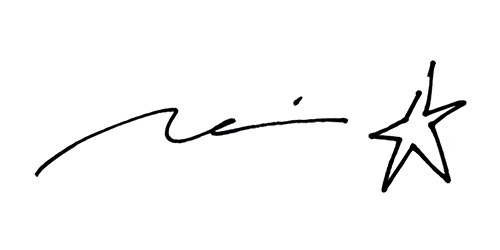Five Dos and Don’ts of the Language of Design
How designers talk about our work can improve relationships with our non-design colleagues

“Can you give a talk at my company’s global marketing summit?”
I got a request from an executive friend of mine recently. Their ask was to talk about how marketing and design should work together better to accelerate business transformation.
Behind the request, there was another ask. The challenge my friend was observing at their company was that the designers in their company were used to focusing mainly on making things and saw themselves as, for better or worse, makers and craftspeople.
In addition, as I gathered from what they told me as well as based on my own experience, many marketers at their company didn’t know how to work with designers effectively.
Marriage
In my thirties, I was introduced to a book called “Men Are From Mars, Women Are From Venus.”
For those of us who may have experienced marital or relational challenges with our significant others, there is a good chance you have come across this book, or at least this phrase. If you haven’t had any relationship bumps, you are an extremely rare breed and I’d love to know your secret. Or, you actually have a “secret.” I won’t ask.
Written by American author and relationship counselor Dr. John Gray, this book states that most common relationship problems between men and women are a result of fundamental psychological differences between the sexes.
Mind you this was published in 1992 when the societal gender perception was a lot more black and white. In 2023, this oversimplification of genders may not be appropriate. Having said that—and having gone through my own personal relationship challenges—there were aspects of what this book preached I could sympathize.
But I’m not here to talk about my or anyone else’s marriage. This post is, however, about a slightly different kind of relationship: Relationships at work between the designers and non-designers.
Designers vs. everyone else
“Marketers Are from Mars, Designers Are from Venus.”
This phrase came to mind because the nature of the relationships that I had with my colleagues outside of the design department, especially when I was younger, was adversarial.
In the first ten or so years of my career as a designer, I just didn’t like taking direction or feedback from non-designers within the companies I worked for. The combination of youth, pride, and insecurity compounded my ego.
I’ve seen similar behaviors from others, and typically younger, also. A designer in their twenties I hired at my company several years ago initially didn’t want to get feedback from anyone else but me, a designer by trade. They were used to working only under design directors and were conditioned to believe design feedback should only come from design directors, and not from “non-designers” or “non-creatives.”
The adversarial relationship between designers and the likes of marketers and account managers isn’t just between the individuals. The corporate culture of a given company can play a role in creating, what I would call, an unintended “creative caste system.”
At one of the companies where I worked years ago, the head of production who was a dozen or so years senior to me called me into his dark corner office and said, “You know, Rei, producers run things around here,” literally wagging his fingers at me.
In another situation, an account director booked a meeting with me, and showed me a PowerPoint deck that showed detailed feedback and prescriptive changes, supposedly from the client, on the design I had shared with the team the day or so before. It turned out those were what he wanted me to change before going to the client. Account directors of this company always wanted to have the final say on what would or wouldn’t get presented to the client.
At Big Tech companies that are much more engineering-driven, product managers tend to take control. When a friend with over twenty years of experience who ran a group of 100+ UX designers at a professional services firm joined one of the GAFA companies, they were just handed a list of features at meetings and were asked to design them against a timeline with very little discussion.
Five dos and don’ts
One reader who recently reached out to me put their stance on the work, as in, things we make, this way:
It's not easy to unzip my heart each day and pull from it what I believe will be THE idea that will make a [marketer’s] dream come true.
We as designers pour our sweat, blood, and tears into our work. We put a lot of ourselves into the design. Of course, we take things personally when being critiqued about our work.
Just as in relationships between genders (and I’m making a generalization here), people with different professional backgrounds and roles tend to put emphasis on different aspects of business and the work. By accepting that we are different species and adjusting the way we talk to each other can help avoid unnecessary frictions between us.
These are some of the dos and don’ts of the language of design that designers and/or others can employ in order to have a more productive working relationship.
I. Do: Talk about the intent of our design. Don’t: Talk about the aesthetics of our design.
This is a tip for designers. Talking about the aesthetics of the work feels natural and perhaps easier as they are the tangible visual elements and styles that we deliberately made decisions on, such as colors, fonts, imagery. However, this invites the other non-designer team members to start looking at the form or appearance of the work, not what’s behind it.
Instead, focus on the thought and intent of our work. Guide the critique to be about the approach and the strategy of design, not the execution of design.
II. Do: Ask what’s working/isn’t working. Don’t: Ask what they like/don’t like.
When our work is being critiqued, it’s easy to feel like we are being attacked as individuals for the reasons above. But that can be managed by how we frame the question to our non-design colleagues.
Shift the critique from what they like/don’t like to what’s working/isn’t working, It moves the discussion away from one’s preference and taste and towards the overall objective of the work.
For non-designers: if you really love what you see, do express it. That does help. A lot.
III. Do: Focus on goals, not fixes. Don’t: Try to fix design in meetings.
Trying to fix the design in a meeting as a group leads to one and one thing only: design by committee. It’s also like trying to provide tech support to your parents over the phone. Frustration is the inevitable outcome.
If the conversation is veering towards what’s wrong with the work and everyone starts offering solutions, we need to steer the conversation towards goals, not fixes.
IV. Do: Name our designs. Don’t: Refer to our design as “Option 1, 2, 3…”
When we refer to our design as just “options,” that’s exactly what they become: mere options. This, again, forces the conversation to be about what we like and don’t like, our subjective preferences and tastes.
When we name our designs, names surface the thoughts behind the design and they raise the conversation about the work to be about ideas, not surface-level executions. They become easy to refer to and more importantly, more memorable.
Remember, we are in an Ideas business. Ideas need to be memorable.
V. Do: Say “I believe…” Don’t: Say “I think…”
Design is subjective so using phrases like “I think this design does XYZ” is unavoidable. It’s best that we don’t use “I think” altogether when selling our work but if we must, use “I believe” instead.
The first step in selling good work is having good work. Then comes persuasion. And that begins with conviction. When talking about our work, using the word “believe” in place of “think” will give us more conviction and confidence.
Trust me, I know. 😉
Thanks for reading. Hit reply with any feedback, thoughts, or questions. I’d love to hear from you.


